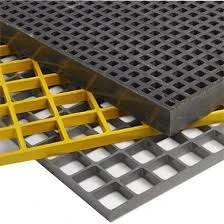loading...
- No. 9, Xingyuan South Street, Dongwaihuan Road, Zaoqiang County, Hengshui, Hebei, China
- admin@zjcomposites.com
- +86 15097380338
- Welcome to visit our website!
fiber reinforced polymer bars
Fiber Reinforced Polymer Bars The Future of Construction Materials
In the realm of modern construction and engineering, the advent of Fiber Reinforced Polymer (FRP) technology has heralded a new era of high-performance materials. Among various applications of FRP, the use of fiber reinforced polymer bars is particularly noteworthy. These bars are revolutionizing structural design and integrity, offering a combination of strength, durability, and lightweight properties that traditional materials such as steel simply cannot match.
What are Fiber Reinforced Polymer Bars?
Fiber reinforced polymer bars are composite materials made from a polymer matrix reinforced with fibers. The fibers, typically made from glass, carbon, or aramid, provide exceptional tensile strength and stiffness. The polymer matrix binds the fibers together and offers protection against environmental factors such as corrosion and moisture. This unique composition allows FRP bars to exhibit remarkable properties, including high strength-to-weight ratios, excellent resistance to chemical attacks, and minimal thermal conductivity.
Advantages of FRP Bars
One of the significant advantages of FRP bars is their resistance to corrosion. Unlike steel, which is susceptible to oxidation and rusting, FRP bars are impervious to moisture, making them ideal for use in harsh environments, including marine applications and structures exposed to saltwater. This property not only prolongs the lifespan of the bars but also reduces maintenance costs, presenting significant savings for construction projects.
Moreover, the lightweight nature of FRP bars simplifies handling and installation processes. Their reduced weight means that less heavy equipment is required on site, and labor costs can significantly decrease. Additionally, because FRP bars do not require extensive surface preparation for bonding, they can be quickly and efficiently integrated into existing structures, minimizing downtime and labor costs.
fiber reinforced polymer bars

Another outstanding characteristic of FRP bars is their ability to contribute to the sustainability of construction practices. As environmental concerns grow, the use of sustainable and eco-friendly materials has become paramount. FRP bars can be manufactured using recycled materials and have lower overall carbon footprints when compared to traditional construction materials. Furthermore, their longevity and durability contribute to the lifecycle sustainability of structures, reducing the need for repeated repairs and replacements.
Applications in Construction and Engineering
The applications of fiber reinforced polymer bars are vast and varied. In the field of civil engineering, they are increasingly used in the reinforcement of concrete structures, offering enhanced tensile strength and enabling innovative design possibilities. FRP bars can be found in bridges, parking garages, tunnels, and even in seismic retrofitting projects, where their low weight and high strength are essential for improving the structural integrity of existing buildings.
In addition, FRP bars are gaining traction in the field of precast concrete products, where they replace traditional reinforcement steel in applications such as slabs and beams. Their resistance to corrosion is particularly beneficial in developing precast elements that will face harsh environmental conditions during their lifespan.
Challenges and Future Prospects
While the benefits of fiber reinforced polymer bars are substantial, some challenges must be addressed before they can achieve widespread adoption. These include the cost of raw materials, the need for specialized training for construction professionals, and the necessity of developing industry standards for their use. However, ongoing research and advancements in manufacturing technologies promise to mitigate these challenges, making FRP bars more accessible and affordable.
As construction practices evolve and the demand for more sustainable, durable materials grows, fiber reinforced polymer bars are poised to play a critical role in the future of building and infrastructure. Their unique properties and advantages make them an excellent choice for engineers and architects looking to push the boundaries of design and construction efficiency. Ultimately, the integration of FRP bars into modern construction will not only enhance structural performance but also contribute to a more sustainable future in the industry.
-
The Rise of FRP Profiles: Strong, Lightweight, and Built to LastNewsJul.14,2025
-
SMC Panel Tanks: A Modern Water Storage Solution for All EnvironmentsNewsJul.14,2025
-
GRP Grating: A Modern Solution for Safe and Durable Access SystemsNewsJul.14,2025
-
Galvanized Steel Water Tanks: Durable, Reliable, and Ready for UseNewsJul.14,2025
-
FRP Mini Mesh Grating: The Safer, Smarter Flooring SolutionNewsJul.14,2025
-
Exploring FRP Vessels: Durable Solutions for Modern Fluid HandlingNewsJul.14,2025
-
GRP Structures: The Future of Lightweight, High-Performance EngineeringNewsJun.20,2025
